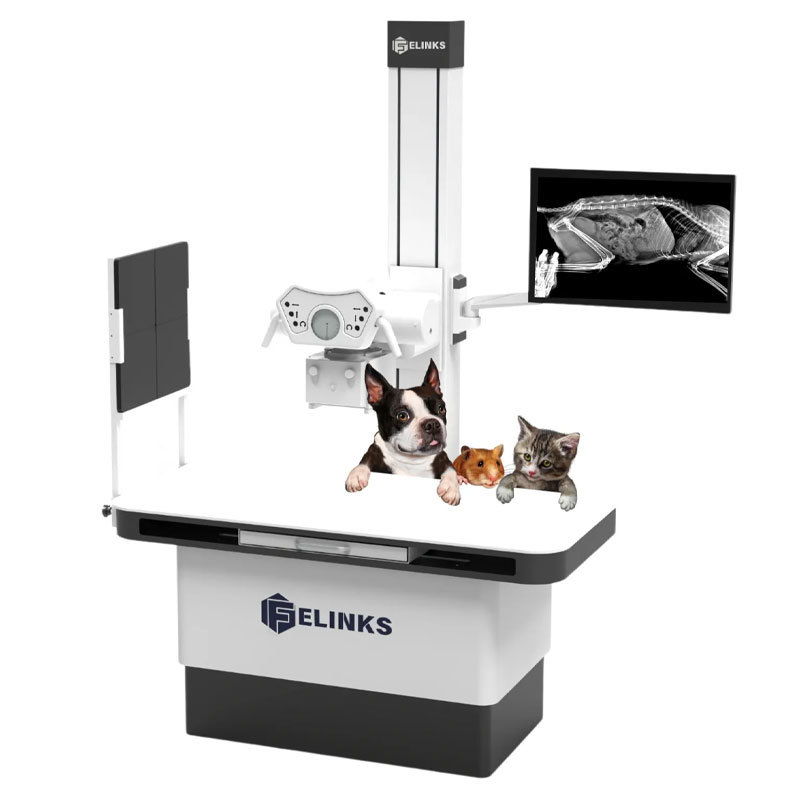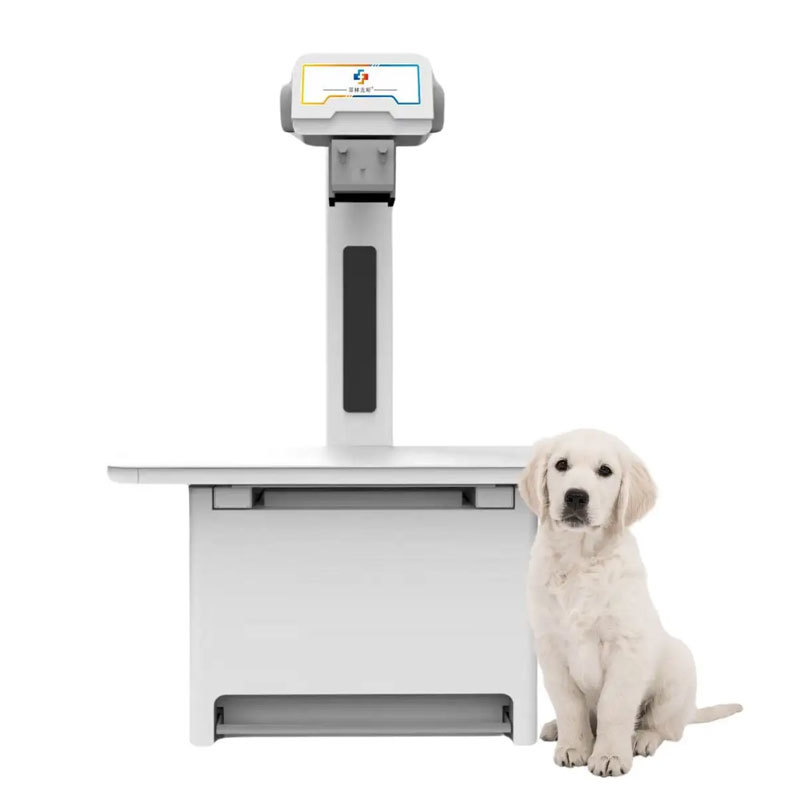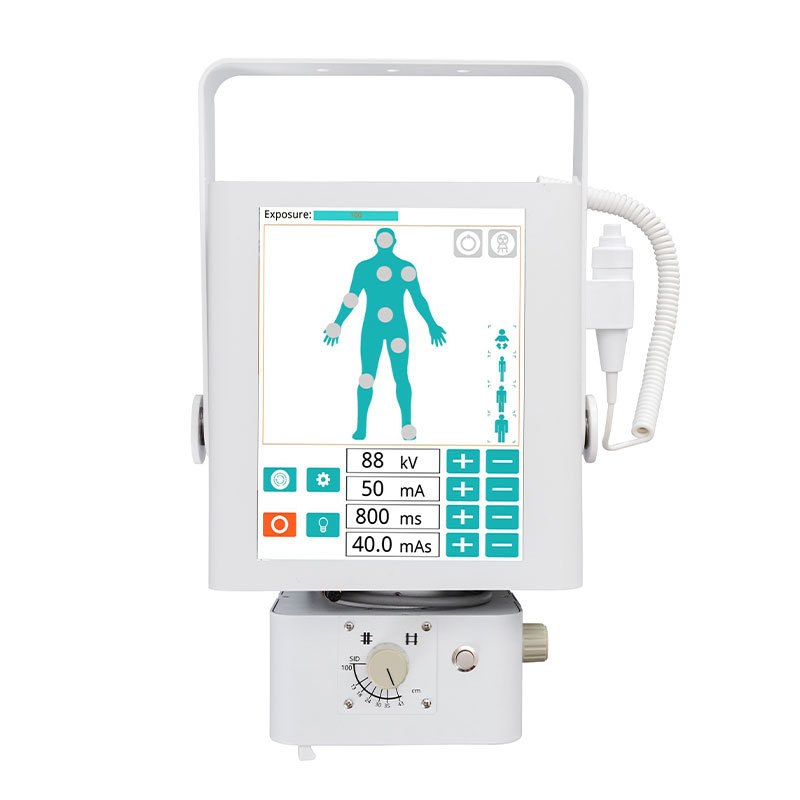Understanding Veterinary X-ray Imaging Systems: A Comprehensive Guide
Veterinary X-ray Imaging Systems are crucial components in the modern veterinary diagnostic toolkit, providing invaluable insights into the health of animals. These systems utilize X-ray technology to produce images of the internal structures of animals, allowing veterinarians to diagnose a wide range of conditions, from fractures to tumors. The ability to visualize bones, organs, and tissues non-
Veterinary X-ray Imaging Systems are crucial components in the modern veterinary diagnostic toolkit, providing invaluable insights into the health of animals. These systems utilize X-ray technology to produce images of the internal structures of animals, allowing veterinarians to diagnose a wide range of conditions, from fractures to tumors. The ability to visualize bones, organs, and tissues non-invasively is essential for effective treatment plans.
The functioning of a Veterinary X-ray Imaging System is based on the principle that different tissues absorb X-rays at varying degrees. When an X-ray beam passes through an animal, denser materials like bones absorb more radiation, appearing white on the X-ray image, whereas softer tissues allow more radiation to pass through and appear darker. This contrast creates the images needed for accurate assessments.
One significant advantage of Veterinary X-ray Imaging Systems is their speed and efficiency. Modern systems are designed to produce high-quality images swiftly, which is particularly beneficial in emergency situations where time is of the essence. Furthermore, advancements in digital imaging technology have enhanced the clarity and detail of X-ray images, making it easier for veterinarians to identify anomalies.
Safety is paramount in veterinary practices, and modern Veterinary X-ray Imaging Systems incorporate numerous features to minimize radiation exposure to both animals and staff. Digital systems generally require less radiation compared to traditional film-based systems, which not only enhances safety but also improves the overall quality of the images produced.
The applications of Veterinary X-ray Imaging Systems extend beyond simple diagnostic purposes. They play a vital role in pre-surgical evaluations, monitoring the progress of healing after injuries, and assessing the health of internal organs during routine check-ups. Additionally, these imaging systems are essential in the field of veterinary oncology, where they help in staging tumors and planning treatment strategies.
As the landscape of veterinary medicine continues to evolve, the integration of advanced imaging technologies will only enhance the capabilities of veterinary professionals. Investing in a high-quality Veterinary X-ray Imaging System can significantly improve diagnostic accuracy and patient outcomes, ultimately leading to better healthcare for animals.
In conclusion, understanding the functionality and advantages of Veterinary X-ray Imaging Systems is critical for veterinary professionals striving to provide the best care for their patients. By leveraging these advanced diagnostic tools, veterinarians can enhance their practice, ensuring better health and well-being for animals under their care.
The functioning of a Veterinary X-ray Imaging System is based on the principle that different tissues absorb X-rays at varying degrees. When an X-ray beam passes through an animal, denser materials like bones absorb more radiation, appearing white on the X-ray image, whereas softer tissues allow more radiation to pass through and appear darker. This contrast creates the images needed for accurate assessments.
One significant advantage of Veterinary X-ray Imaging Systems is their speed and efficiency. Modern systems are designed to produce high-quality images swiftly, which is particularly beneficial in emergency situations where time is of the essence. Furthermore, advancements in digital imaging technology have enhanced the clarity and detail of X-ray images, making it easier for veterinarians to identify anomalies.
Safety is paramount in veterinary practices, and modern Veterinary X-ray Imaging Systems incorporate numerous features to minimize radiation exposure to both animals and staff. Digital systems generally require less radiation compared to traditional film-based systems, which not only enhances safety but also improves the overall quality of the images produced.
The applications of Veterinary X-ray Imaging Systems extend beyond simple diagnostic purposes. They play a vital role in pre-surgical evaluations, monitoring the progress of healing after injuries, and assessing the health of internal organs during routine check-ups. Additionally, these imaging systems are essential in the field of veterinary oncology, where they help in staging tumors and planning treatment strategies.
As the landscape of veterinary medicine continues to evolve, the integration of advanced imaging technologies will only enhance the capabilities of veterinary professionals. Investing in a high-quality Veterinary X-ray Imaging System can significantly improve diagnostic accuracy and patient outcomes, ultimately leading to better healthcare for animals.
In conclusion, understanding the functionality and advantages of Veterinary X-ray Imaging Systems is critical for veterinary professionals striving to provide the best care for their patients. By leveraging these advanced diagnostic tools, veterinarians can enhance their practice, ensuring better health and well-being for animals under their care.
TAG:
Related Posts
Understanding Veterinary X-ray Imaging Systems: A Comprehensive Guide
Veterinary X-ray Imaging Systems are crucial components in the modern veterinary diagnostic toolkit, providing invaluable insights into the health of animals. These systems utilize X-ray technology to produce images of the internal structures of animals, allowing veterinarians to diagnose a wide range of conditions, from fractures to tumors. The ability to visualize bones, organs, and tissues non-




























